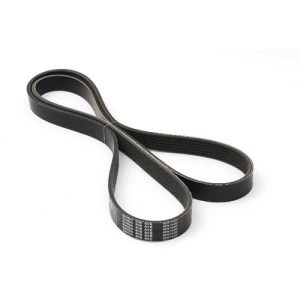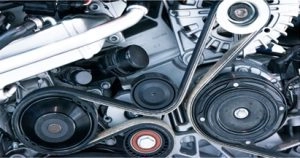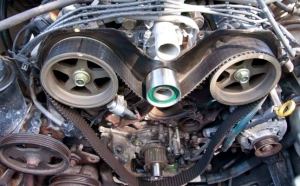The engine belt is a crucial part in the engine system. It helps convert linear motion to rotational motion. It consists of a rubber belt that connects the crankshaft to the camshaft of the car engine. It is one of the most essential components of a car engine, as it transfers motion and power between different parts in the engine. The following signs indicate its damage.

Signs of Engine Belt Damage
Engine Vibration
Engine vibration can indicate damage to the car's engine belt. This vibration occurs when the belt loses the necessary flexibility or when the angles through which the belt should pass are incorrect.
2- Noise in the engine
The loud sound and unusual noise from the engine may indicate a problem with your car's engine belt. This noise could be due to the belt being ripped or the teeth wearing out.
3- Flickering of the lights
If you notice that the lights are flickering in an unusual way while the engine is running, this may indicate damage to the engine belt. Damage to the belt can lead to instability in the engine's movement and thus affect other parts of the engine.
4- The burning smell coming from the engine.
An unusual burning smell is emanating fromThe EngineWhen the belt is damaged, it happens when it interferes with some other components in the engine. If you notice this smell, it is advisable to check your car's engine belt immediately to avoid exacerbating the problem.
5- Increase in engine noise
If your car starts making unusual noises, these sounds may indicate damage to the car's engine belt. These sounds could be a clicking or whistling noise, or any other type of unusual noises. Garages advise regular inspection of the engine belt to avoid bigger issues.
6- Car vibration
If you feel any vibration in the car, it could be due to belt damage. Car vibration could indicate a problem with the belt or any other part of the hydraulic system. Garages advise periodic inspection of your car's engine belt and carrying out necessary maintenance to maintain high car performance.
7- Increase in engine temperature
If the engine temperature rises, it may be due to a damaged belt. The engine belt controls the flow of cold air to the engine and without it, an increase in the engine temperature can occur. An increase in the engine temperature is a serious problem that can lead to permanent engine damage.
Also read: 6 Reasons That Lead to Engine Bearing Damage

8- Decrease in engine performance
If you notice a decrease in engine performance, such as less power or a slowdown of the car, it may be due to belt damage. The belt helps convert linear motion to rotational motion. Without it, there could be a decrease in engine performance. Belt maintenance is important to maintain high engine performance.
9- Engine Vibration
If the engine begins to vibrate while running, this could be a sign of damage to the car's timing belt. The timing belt controls the timing of the cylinders and maintains the stability of the engine. Without it, engine vibration can occur, which could lead to permanent engine damage. Regular inspections of the car's timing belt should be conducted to ensure there is no damage.
10- Increased fuel consumption
If you notice an increase in fuel consumption, it could be due to damage to the car's engine belt. The engine belt controls the movement of the engine and helps to save fuel, and without it, fuel consumption can greatly increase. Increased fuel consumption is a serious problem that leads to additional costs and increased carbon emissions. It is necessary to periodically check the car's engine belt to ensure there is no damage.
How to maintain the engine belt
The car's engine belt can be maintained and damage can be avoided by following some simple steps.
A periodic inspection of the engine belt must be carried out and it should be replaced if necessary.
It is a necessary step to maintain it and avoid its damage. This check includes inspecting the surface of the car's engine belt for any damage, scratch, crack, or wear.
In addition to inspecting the belt edges and ensuring there are no cracks in them.
2- The engine belt must be cleaned and kept away from dirt and grease.
It should be cleaned regularly to maintain its optimal performance and avoid damage. To clean the car's engine belt, a soft brush or a soft, dry cloth can be used to remove the accumulated dirt and dust on it. Strong chemicals or running water should be avoided for cleaning.
3- It is crucial to regularly adjust the engine belt tension.
The tension in the car's engine belt must be examined and adjusted if necessary. If any defects or damage are found in the engine belt, it should be replaced immediately to avoid exacerbating the problem and causing further damage to the engine.

4- Use the appropriate oils for the smooth running of the car's engine.
Using the appropriate oils is one of the basic steps in maintaining a car.Engine running healthBy using the right oils, the excessive friction between the belt and the parts surrounding it is reduced, which leads to extending the life of the car engine belt.

Comments